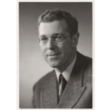How to listen to and understand great music
(Audiobook on CD)
CD 780.9 GREEN 3rd ed. pt.4 of 6
1 available
CD 780.9 GREEN 3rd ed. pt.5 of 6
1 available
CD 780.9 GREEN 3rd ed. pt.1 of 6
1 available
Copies
| volume | Location | Call Number | Status |
|---|---|---|---|
| pt.4 of 6 | Central - Adult Audiobooks | CD 780.9 GREEN 3rd ed. pt.4 of 6 | Available |
| pt.5 of 6 | Central - Adult Audiobooks | CD 780.9 GREEN 3rd ed. pt.5 of 6 | Available |
| pt.1 of 6 | Columbia Pike - Adult Audiobooks | CD 780.9 GREEN 3rd ed. pt.1 of 6 | Available |
| pt.2 of 6 | Columbia Pike - Adult Audiobooks | CD 780.9 GREEN 3rd ed. pt.2 of 6 | Available |
| pt.3 of 6 | Columbia Pike - Adult Audiobooks | CD 780.9 GREEN 3rd ed. pt.3 of 6 | Available |
Description
Great music is a language unto its own, a means of communication of unmatched beauty and genius. And it has an undeniable power to move us in ways that enrich our lives - provided it is understood. If you have ever longed to appreciate great concert music, to learn its glorious language and share in its sublime pleasures, the way is now open to you, through this series of 48 wonderful lectures designed to make music accessible to everyone who yearns to know it, regardless of prior training or knowledge. It's a lecture series that will enable you to first grasp music's forms, techniques, and terms - the grammatical elements that make you fluent in its language - and then use that newfound fluency to finally hear and understand what the greatest composers in history are actually saying to us. And as you learn the gifts given us by nearly every major composer, you'll come to know there is one we share with each of them - a common humanity that lets us finally understand that these were simply people speaking to us, sharing their passion and wanting desperately to be heard. Using digitally recorded musical passages to illustrate his points, Professor Greenberg will take you inside magnificent compositions by Bach, Handel, Haydn, Mozart, Beethoven, Chopin, Verdi, Wagner, Brahms, Tchaikovsky, Stravinsky, and more. Even if you have listened to many of these illustrative pieces throughout your life - as so many of us have - you will never hear them the same way again after experiencing these lectures.
More Details
Notes
Table of Contents
Subjects
Reviews from GoodReads
Citations
Greenberg, R. (2006). How to listen to and understand great music (3rd ed., library ed.). Teaching Co..
Chicago / Turabian - Author Date Citation, 17th Edition (style guide)Greenberg, Robert, 1954-. 2006. How to Listen to and Understand Great Music. Chantilly, VA: Teaching Co.
Chicago / Turabian - Humanities (Notes and Bibliography) Citation, 17th Edition (style guide)Greenberg, Robert, 1954-. How to Listen to and Understand Great Music Chantilly, VA: Teaching Co, 2006.
Harvard Citation (style guide)Greenberg, R. (2006). How to listen to and understand great music. 3rd ed., library ed. Chantilly, VA: Teaching Co.
MLA Citation, 9th Edition (style guide)Greenberg, Robert. How to Listen to and Understand Great Music 3rd ed., library ed., Teaching Co., 2006.












































































